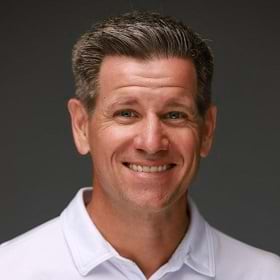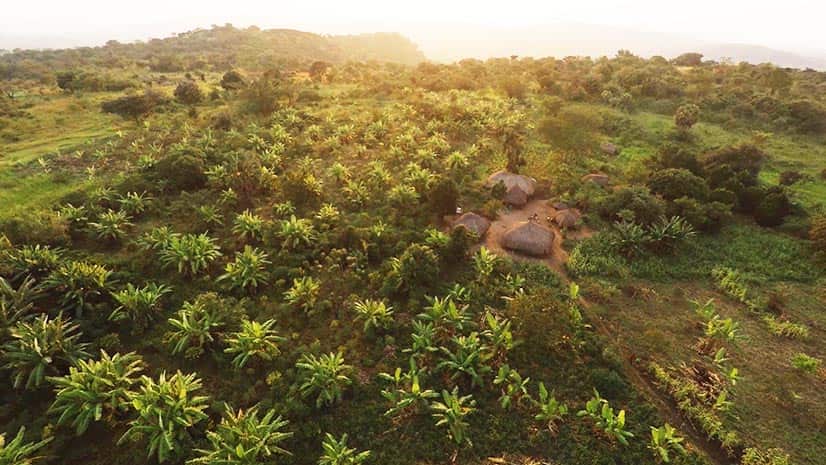Erika Le grew up determined to make a difference in the world. And by any measure, she has.
She spent years studying microscopic chemical structures, then took on a very macro challenge: improving an international circular supply chain.
At plastics manufacturer Rehrig Pacific, where Le is vice president of sustainable solutions, circularity has been part of daily operations for more than a century.
But soon after Le took the job in 2021, she heard from companies looking for proof.
“We had customers say to me, ‘I understand you’re taking [the product] and you’re recycling it,'” she recalls. “‘But even if you’re grinding it up here in the US, how do we know that you’re bringing it back to your manufacturing plants and that you’re not selling it overseas and buying a cheaper stream to put back in your products?'”
The question was frustrating, but motivating. Before long, Le and her team found a cutting-edge answer—a system based on mobile devices, blockchain technology, and geographic information system (GIS) software.
(Le explains Rehrig Pacific’s circular practice in this short clip.)
For that work and her success managing and growing Rehrig Pacific’s operational sustainability initiatives, including the engineering lab for sustainable materials, Le was named one of 2022’s Environment+Energy Leaders, a list that recognizes professionals who create “best practices and products to help their companies—or other companies—achieve greater success in commercial and industrial environment and energy management.” She was also named to that year’s Top 40 Under 40 by Waste360.
Providing the Proof
For many organizations, the circular economy is Bigfoot-esque—often discussed but rarely seen.
Despite a growing consumer appetite for sustainable practices, most products still follow a straight line, from raw material to finished good to landfill.
“We like to say that Rehrig Pacific was circular before circular was even a thing,” says Jeff Hentges, president of delivery solutions and the person who hired Le.
Nearly all of the company’s products—which include shipping pallets, residential and commercial trash containers, warehouse storage bins, and more—are designed to be returnable and reusable, and nearly all of them are 100 percent recyclable. (The small percentage that aren’t have metal reinforcement bars welded inside, which are challenging for a typical plastic recycler to manage.) By recovering damaged and obsolete equipment through warranty and buy-back programs, Rehrig Pacific uses old material to make new products, avoiding carbon emissions and enabling a true circular economy.
“We’ve had great partnerships going back years with forward-looking companies who believe in the returnable packaging model,” Hentges says. “We not only believe that returnable packaging is the greatest sustainable model; in most instances, it’s the greatest economic model, too.”
Le’s achievement—building proof of the company’s commitment to that model and those practices—was born of her drive and an early introduction to the power of systems.
“Stop Trying to Convince Me Otherwise”
Le grew up in Halifax, a coastal Canadian city where holding the door for strangers is a civic virtue. Childhood came with an education in systems thinking from her father, a carpenter who reveled in exploring the intricacies of complex structural challenges and machines.
Le dreamed of contributing to a healthier planet, but first she had to survive 12th grade. Try as she might to disappear among classmates, she became a favorite target of “Mr. Saab,” who often called on her to answer tough questions.
“It’s interesting when people trust you more than you trust yourself,” Le says of Saab and later mentors. “I’ve tried to talk people out of that. I specifically recall a meeting where a former manager was offering me a promotion and I told him, ‘You need to find someone that’s way better than me that can do this.’ And he listened for quite a while, then told me, ‘Okay, are you done trying to convince me otherwise? Because I’m not changing my mind.’”
Instead, their faith changed her. In one case, it also bent the trajectory of her career. At Mount Allison University in New Brunswick, Le was a standout in the lab of the late professor Stephen Westcott, a renowned chemistry researcher. When she mentioned her plan to attend dentistry school and become an oral surgeon, he suggested an alternate path: go to graduate school, continue your chemistry research, and find new ways to impact the world.
Rounding the Curve with Blockchain and GIS
At Rehrig Pacific, Le manages a team of material engineers. They research alternative materials to virgin plastic—a staple of modern life and a material of undeniable utility, but also one that originates from fossil fuels and clogs landfills and waterways around the globe. Her team also analyzes recyclable plastics that can strengthen the company’s circular practices.
Recent industry initiatives are pointed in a similar direction. Under the U.S. Plastics Pact—spurred by the Ellen MacArthur Foundation and others—well-known product companies have pledged to take steps by 2025 to lessen the material’s negative impacts. Some are Rehrig Pacific’s customers, and their outlook is changing.
“They don’t just want a transactional-level approach to sustainability anymore,” Le says. “They want traceability, supply chain transparency, partnerships, and collaboration.”
In her early days at Rehrig Pacific, Le embraced the challenge of meeting those expectations, as she explains here:
As she sought ways to prove the circularity of Rehrig Pacific’s supply chain, Le channeled her childhood days in Halifax, examining the entire system of recycling. Recognizing that Rehrig Pacific needed a digital record of each step in the process, she turned to a solution that tracks circular products via QR Codes, blockchain technology, and GIS software. (See the sidebar to learn about the technology involved.)
To picture the process, imagine a residential trash bin that’s lost a duel with a snowplow. The homeowner alerts the waste collection company, which transports the broken bin to a toll grinder where it’s crushed into small pieces of plastic resin. That resin is delivered to the nearest Rehrig Pacific manufacturing facility, where it becomes raw material for a new bin.
At each step, a worker with a mobile device scans the QR Code associated with the product batch, then answers a few prompts to identify its characteristics. That data, along with the location of each processing stage, is recorded in a blockchain ledger, creating a digital chain of custody. GIS software displays all the transactions on a smart map.
Now, when a customer asks whether Rehrig Pacific’s program is truly circular, Le has the location intelligence to prove it. “I can say, ‘Actually, I have all this data, third-party certified, verified by blockchain, verified by location-specific data, and you have access to it. We can provide you that report, no problem.’ That is transformational to an industry like this.”

Chain of custody has always been very important . . . in our ability to look our customers in the eye and say we’re being reputable and doing the right things when it comes to getting material on the recycled market.
Seeing Clearly Now
Over time, Le has brought together parts of her personality that once seemed like contradictions—studying small structures but managing large systems, doubting whether she could handle a project but knowing she could make an impact. Even now, Le can be incredibly modest, despite her accomplishments.
Support from Hentges and others has helped. “There were some times,” he recalls, “where it was like, ‘I love what you’re saying. Be more bold, be more vocal. You’ve got a ton to offer.'”
Fueled by that encouragement and Rehrig Pacific’s innovative spirit, Le implemented a groundbreaking application of blockchain and GIS, strengthening a circular practice that will be key to a more sustainable world.
It took time, but she is starting to grasp what “Mr. Saab” suspected all along.
“I guess at this point in my career,” she says, “I sort of know that I can figure anything out.”
Erika Le sees the circle clearly now.
The Esri Brief
Trending insights from WhereNext and other leading publicationsTrending articles

December 5, 2024 |

July 25, 2023 |

November 12, 2018 |

February 1, 2022 |

July 29, 2025 |

July 14, 2025 |





